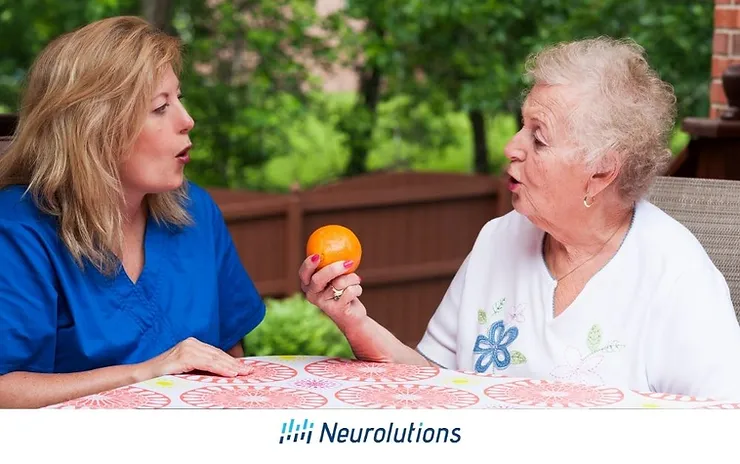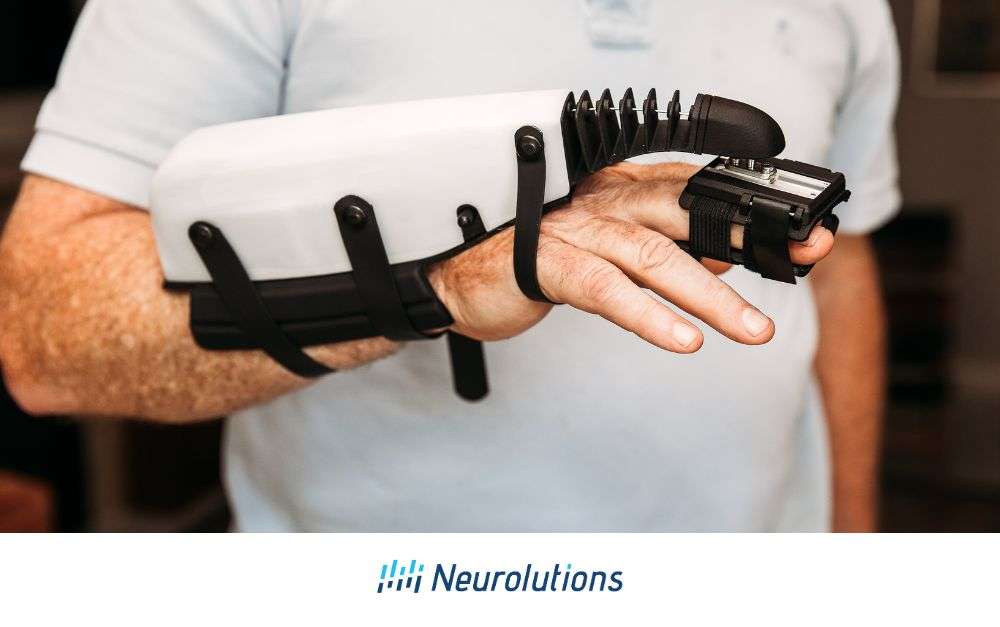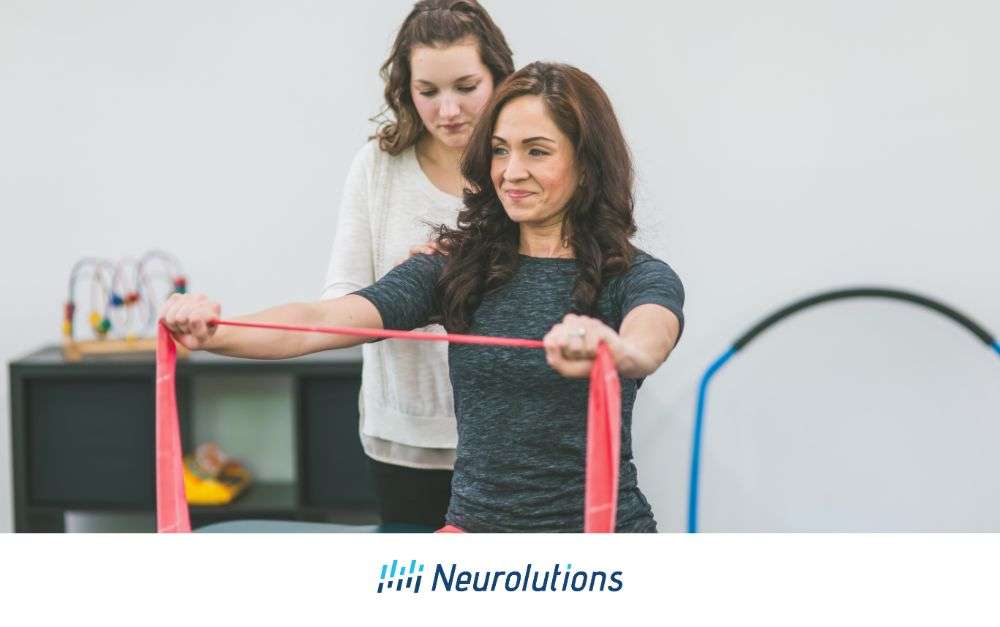Language and communication are fundamental aspects of human interaction. When impaired, significant emotional and social repercussions are often experienced. Frustration, embarrassment, and feelings of shame are commonly shared responses to language and communication difficulties, particularly related to speech, language or other communication barriers.
This is equally true for individuals with a history of stroke that resulted in a communication and language impairment. For survivors managing symptoms of either Broca’s or Wernicke’s aphasia, difficulties with communication may result in social withdrawal as well as increased depressive mood and anxiety.
The comprehension of language primarily resides in the Wernicke area of the brain, whereas the capacity to articulate words and sentences is localized in the Broca area of the brain. Together, these two areas are vital for language processing and production in the human brain and are necessary for effective communication.
Those that had a stroke resulting in damage to the posterior temporal lobe of their dominant brain hemisphere typically exhibit signs of Wernicke’s aphasia, which is a language comprehension impairment (1). In 1874, German neurologist Carl Wernicke discovered the Wernicke area of the brain (2). The Broca area, discovered just slightly earlier, is located in the frontal area of the dominant brain hemisphere. Broca’s area is known for speech production, enabling speech production and articulation, grammatical processing, and motor planning movements needed for speech (3).
While problems with motor skills, cognition, and mood are prevalent in stroke survivors, aphasia occurs in only 21-38% of all stroke survivors (4). Broca’s aphasia is more common than Wernicke’s aphasia (5), but stroke victims can experience both if their stroke-related injuries are in both locations in the dominant hemisphere. It is important to note that while many individuals with aphasia following stroke can make substantial improvements, some may continue to experience residual speech and language difficulties. Early and ongoing intervention and rehabilitation provided by a Speech and Language Pathologist (SLP), family support, and other resources may impact successful recovery and successful outcomes.
The Brain’s Response to Stroke Induced-Language Impairment
Ischemic strokes are caused by a blood clot that travels to the brain or forms within the brain. This causes a blockage of blood flow that results in both brain cell death and damage to the brain’s nerve signaling ability in the injured area. The middle cerebral artery supplies blood to both the Wernicke and Broca areas in the cerebral cortex of the brain where language and speech are primarily controlled.
As mentioned, in a person’s dominant brain hemisphere, the Wernicke area is in the posterior (back) temporal lobe, while the Broca area is in the frontal temporal lobe. The dominant hemisphere in right-handed people is usually the left hemisphere; this is reversed for left-handed people.
When these areas of the brain are damaged in an ischemic or hemorrhagic stroke, the stroke survivor will likely experience problems with speaking, language comprehension or both. In the case of Wernicke’s aphasia, it is highly probable that the individual will have challenges with reading and writing.
Wernicke’s Area vs. Broca’s Area
If Wernicke’s area is damaged as a result of a stroke, word and sentence production and grammar may be fluent. However, the understanding and processing of verbal communication is likely to be very confusing to the stroke survivor when they are listening to others convey spoken messages. Wernicke’s aphasia is also called receptive aphasia.
In contrast, a stroke survivor with Broca’s aphasia is likely to have difficulty producing words and speaking in sentences; their speech may be slow, labored, and be composed of a very limited vocabulary. On the contrary, speech can also sound nonsensical and full of jargon phrases that do not convey true meaning when assembled. People with Broca’s aphasia often understand what is spoken to them and may also understand written language. Broca’s aphasia is also called expressive aphasia as the name implies.
It is important to note that those with Wernicke’s or Broca’s aphasia as a result of stroke may not have a cognitive impairment. Aphasia is considered a language impairment. Memory, judgment, and executive functioning skills may be unaffected even though at first glance it may be assumed the stroke survivor must be having cognitive troubles if they cannot communicate properly. This also means that in the case of a mild stroke affecting either the Wernicke’s or Broca’s area, the person may be frustrated and very aware that they have language and communication problems.
Unfortunately, there are individuals with stroke in which both communication, language and cognition are all impacted. Careful evaluation by a healthcare professional is often needed to differentiate a cognitive versus communication impairment so the proper care plan can be executed and communicated to the individual and their family for proper support and implementation.
Causes of Wernicke’s Area Damage
Damage to the Wernicke’s area of brain can result from various health conditions and injuries, including:
- Stroke (either ischemic or hemorrhagic)
- Traumatic Brain Injury (TBI)
- Neurological Conditions:
- Parkinson’s Disease
- Wernicke’s Encephalopathy
- Cancerous brain tumor(s) affecting the Wernicke’s area
- Later-Stage Alzheimer’s Disease
Symptoms of Wernicke’s Area Damage
The following are some of the common signs and symptoms of damage to the Wernicke’s area of the brain (6):
- Producing (speaking) sentences that lack actual meaning;
- Difficulty with repeating words or phrases;
- Able to speak in long sentences, but the sentences do not actually make sense;
- Forming sentences with several random words included in them
- Difficulty with reading and/or writing
- Trouble understanding others
Relationship Between Stroke and Wernicke’s Area
The severity and location of the stroke generally determines the scope and impact of the Wernicke’s aphasia. The recovery timeline after aphasia varies significantly from person to person, but it is typically linked to the following (6):
- Aphasia severity level (mild, moderate, or severe)
- Stroke location
- Size of the area where the brain is injured
Recovery of language function in individuals with Wernicke’s aphasia may show the most significant progress within the first few months following the onset of the condition before slowing down (7). While this is not a strict timeline rule of adherence and recovery varies person to person, immediate and ongoing intervention is important. As new synaptic connections between brain cells are strengthened while the stroke survivor practices language and communication skills, it is still highly possible the person will continue to make steady progress.
An important and often misunderstood aspect of Wernicke’s area damage is that the affected individual may not have an awareness of the extent of their language comprehension impairments. This lack of self-insight into the level of impairment (termed anosognosia) can result in frustration and confusion during conversations with another person. This can be particularly challenging for the loved ones of the Wernicke’s area-damaged person with anosognosia, as they may find themselves the target of the afflicted person’s frustration and anger. Despite the difficulties involved, people with Wernicke’s damage and anosognosia need social interaction in order to improve language comprehension and maintain emotional well-being.
Diagnosis of Wernicke’s Area Damage
Language comprehension testing is often utilized to diagnose Wernicke’s aphasia, as well as for assessing its severity. A common language comprehension test utilized is the Boston Diagnostic Aphasia Test (8). Magnetic Resonance Imaging (MRI) and Computerized Tomography (CT) scans of the brain are also typically utilized in stroke patients to determine whether the Broca or Wernicke’s areas have been damaged.
Treating Stroke-Caused Wernicke’s Area Damage
There is no current standard treatment for Wernicke’s aphasia, but Speech and Language Therapy is usually the mainstay of care (9). In some individuals, spontaneous recovery of language comprehension occurs within a few days of the stroke (10). For those who do not experience a quick spontaneous recovery of language communication and communication ability post-stroke, the SLP creates an individualized treatment plan aligned with the stroke-afflicted person’s unique needs.
Speech and language rehabilitation sessions can aid stroke survivors with Wernicke’s aphasia to improve their language comprehension and communication skills. The number and duration of speech therapy sessions depends upon a wide variety of factors. These factors include:
- The stroke survivor’s level of language comprehension/communication impairment
- Other stroke-related issues faced by the stroke patient
- Level of stroke-related fatigue experienced by the patient (which can limit the length of a session)
Besides exercises aimed at increasing language comprehension, compensatory activities are often included such as the use of drawing, play-acting, singing, and other methods to improve comprehension and communication abilities. Since the area and neural networks for singing are different than for speech (11), singing has been increasingly incorporated over the past five years into rehab programs aimed at treating aphasia.
Constraint-Induced Aphasia Therapy (CIAT) – which constrains the use of compensatory activities in favor of verbal exercises and activities – and Melodic Intonation Therapy (MIT) – which incorporated the use of music – are two novel treatment approaches that have been recently utilized as rehabilitation approaches aimed at stroke survivors with aphasia (12).
The overall strategies employed by speech therapists in treating stroke survivors with aphasia are aimed at:
- Language recovery
- Enhancing quality of life
- Rebuilding lost self-esteem and reducing feelings of shame due to language deficits
- Supporting caregivers – helping caregivers to understand the impact of Wernicke’s aphasia on the afflicted individual
Cognitive rehabilitation strategies can address stroke-related cognitive deficits that can impact language comprehension and communication skills. These may include exercises to improve short-term memory, focus attention/concentration, and practice problem-solving and decision-making. Boosting overall cognitive ability may improve language comprehension and communication ability.
Learning to Live with Wernicke’s Area Damage
Living with Wernicke’s area damage can be frustrating and negatively impact social interactions. However, stroke survivors with Wernicke’s aphasia can recover their language comprehension and/or learn to minimize the language impairment impact on their daily lives. Maintaining optimism is key to overcoming limitations.
In people with mild Wernicke’s area damage (as well as their caregivers), the following are four strategies to improve communication abilities:
- Use simple language – avoid using complex vocabulary and use short sentences.
- Slow down speaking speed, and speak as clearly as possible.
- Use visual supports (such as drawing or gestures) in addition to speaking to convey meaning when talking to someone.
Depending on the severity of the damage to Wernicke’s area, a therapist may recommend the use of assistive technology to help with language comprehension and communication skills. Speech-generating apps that are used on mobile devices and Smartphones may be useful in augmenting communication capacity on the part of the stroke survivor with aphasia (13).
Dealing with brain disorders such as Wernicke’s aphasia can be emotionally-challenging for both the affected individuals, and their family members and caregivers. Patience, empathy, and ongoing interactions are crucial for helping stroke survivors with aphasia to cope with their disorder and improve their communication skills. Participating in a support group as a family caregiver or a friend of the aphasia-afflicted stroke survivor can be helpful.
Learn more about Wernicke’s aphasia by viewing this YouTube video from the National Aphasia Association:
References:
- Acharya AB, and Wroten M. (2023). Wernicke Aphasia. In: StatPearls [Internet]. StatPearls Publishing: Treasure Island, FL. Webpage: https://www.ncbi.nlm.nih.gov/books/NBK441951/#:~:text=Wernicke%20aphasia%20is%20characterized%20by,lobe%20of%20the%20dominant%20hemisphere.
- Javed K, Reddy V, Das JM, et al. (2023). Neuroanatomy, Wernicke Area. In: StatPearls [Internet]. StatPearls Publishing: Treasure Island, FL. Webpage: https://www.ncbi.nlm.nih.gov/books/NBK533001/#:~:text=Wernicke%20area%20was%20first%20discovered,gyrus%20in%20the%20dominant%20hemisphere.
- Johns Hopkins Medicine. (February 17, 2015). Broca’s Area Is the Brain’s Scriptwriter, Shaping Speech, Study Finds. Webpage: https://www.hopkinsmedicine.org/news/media/releases/brocas_area_is_the_brains_scriptwriter_shaping_speech_study_finds
- Berthier ML. (2005). Poststroke aphasia : Epidemiology, pathophysiology and treatment. Drugs and Aging 22(2): 163-82. Webpage: https://pubmed.ncbi.nlm.nih.gov/15733022/#:~:text=Aphasia%2C%20the%20loss%20or%20impairment,term%20morbidity%2C%20mortality%20and%20expenditure.
- Stroke Association. Types of aphasia. Webpage: https://www.stroke.org.uk/what-is-aphasia/types-of-aphasia
- Norman-Haignere SV, Feather J, Boebinger D. (2022). A neural population selective for song in human auditory cortex. Current Biology 32(7): P1470-P1484.E12. Webpage: https://www.cell.com/current-biology/fulltext/S0960-9822(22)00131-2?_returnURL=https%3A%2F%2Flinkinghub.elsevier.com%2Fretrieve%2Fpii%2FS0960982222001312%3Fshowall%3Dtrue
- American Speech-Language-Hearing Association (ASHA). Aphasia. Webpage: https://www.asha.org/practice-portal/clinical-topics/aphasia/
- Acharya AB, and Wroten M. (2023). Wernicke Aphasia. In: StatPearls [Internet]. StatPearls Publishing: Treasure Island, FL. Webpage: https://www.ncbi.nlm.nih.gov/books/NBK441951/#:~:text=Wernicke%20aphasia%20is%20characterized%20by,lobe%20of%20the%20dominant%20hemisphere.
- aracterized%20by,lobe%20of%20the%20dominant%20hemisphere.
- Acharya AB, and Wroten M. (2023). Wernicke Aphasia. In: StatPearls [Internet]. StatPearls Publishing: Treasure Island, FL. Webpage: https://www.ncbi.nlm.nih.gov/books/NBK441951/#:~:text=Wernicke%20aphasia%20is%20characterized%20by,lobe%20of%20the%20dominant%20hemisphere
- Cichon N, Wlodarczyk L, Saluk-Bijak J, et al. (2021). Novel Advances to Post-Stroke Aphasia Pharmacology and Rehabilitation. Journal of Clinical Medicine 10(17): 3778. Webpage: https://www.ncbi.nlm.nih.gov/pmc/articles/PMC8432240/
- Cichon N, Wlodarczyk L, Saluk-Bijak J, et al. (2021). Novel Advances to Post-Stroke Aphasia Pharmacology and Rehabilitation. Journal of Clinical Medicine 10(17): 3778. Webpage: https://www.ncbi.nlm.nih.gov/pmc/articles/PMC8432240/
- American Speech-Language-Hearing Association (ASHA). Augmentative and Alternative Communication (AAC). Webpage: https://www.asha.org/public/speech/disorders/aac/




